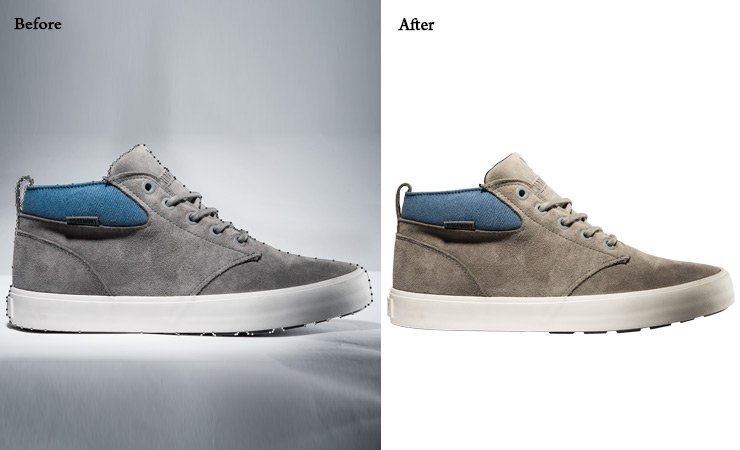- services
- Post-Production Photo Editing
- photo retouching
- photo clipping path
- hi-end photo masking
- ghost mannequin editing
- background removal
- photo cutout
- photo resizing
- photo enhancement
- Image Masking Services
- color cast removal
- Image Composition
- Color Correction
- Print Ready Images
- Photo Color match
- Color Grading
- Color Seperation Masking
- Garment Patern match
- Color Swatch Matching
Post-Production Photo Editing

Catalog Management
Does your catalog emotionally connect with your target audience?

Post Production Video Retouching
Get the best high-end professional video editing services.
Post-Production Photo Editing

Catalog Management
Does your catalog emotionally connect with your target audience?

Post Production Video Retouching
Get the best high-end professional video editing services.
Catalog Management
Does your catalog emotionally connect with your target audience?
Post Production Video Retouching
Get the best high-end professional video editing services.
- Post-Production Photo Editing
- Studio
- industry

Catalog Management
Does your catalog emotionally connect with your target audience?

Post Production Video Retouching
Get the best high-end professional video editing services.

Catalog Management
Does your catalog emotionally connect with your target audience?

Post Production Video Retouching1
Get the best high-end professional video editing services.

Catalog Management
Does your catalog emotionally connect with your target audience?

Post Production Video Retouching
Get the best high-end professional video editing services.
- who we are
- our work
- Blog
- contact
- TEST US FREE
- services
- Post-Production Photo Editing
- photo retouching
- photo clipping path
- hi-end photo masking
- ghost mannequin editing
- background removal
- photo cutout
- photo resizing
- photo enhancement
- Image Masking Services
- color cast removal
- Image Composition
- Color Correction
- Print Ready Images
- Photo Color match
- Color Grading
- Color Seperation Masking
- Garment Patern match
- Color Swatch Matching
Post-Production Photo Editing

Catalog Management
Does your catalog emotionally connect with your target audience?

Post Production Video Retouching
Get the best high-end professional video editing services.
Post-Production Photo Editing

Catalog Management
Does your catalog emotionally connect with your target audience?

Post Production Video Retouching
Get the best high-end professional video editing services.
Catalog Management
Does your catalog emotionally connect with your target audience?
Post Production Video Retouching
Get the best high-end professional video editing services.
- Post-Production Photo Editing
- Studio
- industry

Catalog Management
Does your catalog emotionally connect with your target audience?

Post Production Video Retouching
Get the best high-end professional video editing services.

Catalog Management
Does your catalog emotionally connect with your target audience?

Post Production Video Retouching1
Get the best high-end professional video editing services.

Catalog Management
Does your catalog emotionally connect with your target audience?

Post Production Video Retouching
Get the best high-end professional video editing services.
- who we are
- our work
- Blog
- contact
- TEST US FREE

Understanding the Supply Chain: How In-House Brands, Vendors, and Retailers Coexist
By David November 20, 2024
Understanding the Supply Chain: How In-House Brands, Vendors, and Retailers Coexist
In a multilayered retail world, the supply chain takes a front seat to ensure that products reach customers efficiently. Developing a well-coordinated supply chain increases product quality and customer satisfaction.
Three key players essential for this system are in-house brands, vendors, and retailers. Each has a unique role that directly impacts the flow of products from production to the final customer. In-house brands offer customized products that serve retailer objectives, a vendor provides primary materials and resources, and the retailer connects to the consumers.
This blog explores how the elements are aligned because of interwoven efforts. The best way to understand this cooperation is to understand how an effective supply chain benefits businesses and customers.
Role of In-House Brands in the Chain of Supply
In-house brands or private labels are such products developed, owned, and sold by the retailer. That means the development of the product is under the complete control of the retailers concerning its quality and price. Unlike third-party brands, in-house brands connect to the retailer’s identity and strategic objectives and, therefore, form a coherent and focused range of products directed toward specific customer groups.
For example, many large retailers create their products, such as groceries or clothes, based on consumer preferences, which makes the retailer different from other similar retailers. This structure allows retailers to act swiftly in changing trends, giving them a better opportunity to respond to changing consumer demand. By maintaining the perfect quality and presentation of products, in-house brands can create a strong brand identity and gain higher profit margins since they don’t split revenue with independent suppliers.
With in-house brands, retailers are in charge of the entire supply process—from outsourcing raw material procurement to vendors until the final product is displayed before consumers. Such control over production is bound to reduce production costs and operations much more efficiently. They are also at liberty to change the products in the market according to customer reactions or seasonal demands, thereby keeping the offerings fresh and attractive.
How vendors support retailers and in-house brands
Vendors are an essential part of a retailer’s supply chain, as they supply commodities, raw materials, or semi-finished goods that retailers sell either directly or combine with their in-house brands. Outsourcing for e-commerce growth through vendors offers expertise, resources, and scale to produce goods in big quantities with quality standards that in-house brands cannot achieve on their own.
Vendors’ key benefits include the ability to deliver large orders and effectively control production costs. This is especially beneficial to in-house brands that rely on vendors for resources or production capabilities they cannot have in-house.
In addition, vendors allow flexibility when dealing with seasonal products or an abrupt rise in demand while at the same time offering retailers precise and proper inventories. The e-commerce sector’s fast product lifecycle, volatile demand, and high-speed seasonality make vendors very critical in controlling inventories, providing timely service, and ensuring that retailers maintain good customer relationships by avoiding stockouts. This streamlined process benefits e-commerce supply chain management by maintaining a steady flow of goods, benefitting both retailers and consumers.

Role of Retailer in the Supply Chain and Customer Interface
As the last link of the supply chain, retailers play an active role in delivering products to customers and providing a hassle-free shopping experience. They take care of stocking, displaying, and promoting merchandise and help customers in every way possible. They also collect information about customer preferences, which further helps the in-house brands and vendors understand the market.
Between the house brand and the consumer, retailers are a link directly to the suppliers. Retailers gather valuable data about customers to improve the entire supply chain process. They create insights regarding customers’ preferences, purchasing behavior, and feedback. For instance, the retailer might come up with insights on the style or materials that are preferred by the customer, hence allowing the vendors to change their products to suit the needs of the customer.
In e-commerce, the role of retailers goes beyond the store. The retailer coordinates logistics and promotes products through digital merchandising to supply the best customer service. They would have to collaborate with in-house brands and vendors to coordinate time-to-market delivery, accurate product descriptions, and quality images that help create an exemplary online shopping experience. Visual presentation is pretty critical in e-commerce because product images and descriptions are the first experiences a customer will have with the product. However, things like the quality of product images and fast, reliable shipping may create an interaction experience with a brand that will strengthen the bond of loyalty and encourage repeat business.

How In-House Brands, Vendors, and Retailers Coexist: Benefits of Collaboration and Integration
The right synergy among retailers, in-house brands and vendors is important in establishing an efficient and resilient supply chain. Each entity brings unique strengths and expertise, so collaboration enables better decision-making, faster lead times, and enhanced quality of the product.
A well-integrated retail supply chain minimizes delays, errors, and costs in optimum proportions and allows a smoother flow of communication between these entities. For example, an e-commerce retailer, within the fast-moving channels, can integrate closely with vendors to facilitate replenishing supplies on time for high-demand items.
Collaborative supply chain models also bring out the challenges that may arise, such as supply fluctuations, raw material shortages, or maybe quality issues. Through regular communication and common goals, every player in the supply chain can adjust and respond swiftly to ensure that their customers are satisfied. This level of integration not only improves operational effectiveness but also makes it possible for everyone to adjust based on market trends, decreases overhead costs, and provides high-quality products to consumers.

Conclusion
In-house brands, vendors, and retailers play integrated and complementary roles that form the backbone of a strong and responsive supply chain. Through joint work, these players contribute to smooth flows of goods, consistent product quality, and a good customer experience. In today’s competitive e-commerce landscape, customers are overwhelmed by numerous products.
Thus, product presentation is essential for increasing sales and loyalty. Professional services for photo editing and retouching like MubyTech will enable a company to enhance the visual appearance of its products so that it will have good value in the supply chain effort of the business. That means that with high-quality visual support, retailers and e-commerce brands could help their supply chain strategies so that the product presented will stand out in the memories of the customers.
By MubyTech
Global Image Editing Partner
Global Image Editing Partner



